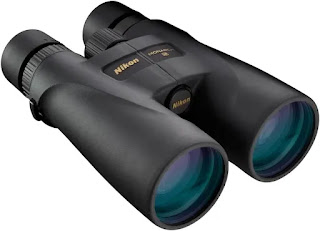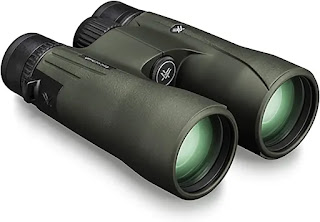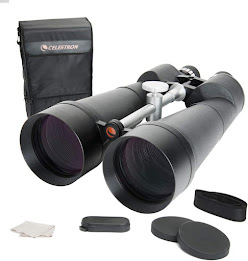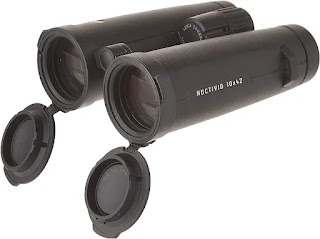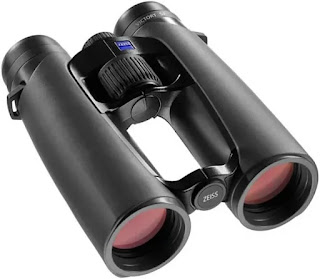Binoculars,
often underestimated, are marvels of optical engineering that bring the distant
and the unseen within our grasp. In the world of exploration and observation,
they serve as a bridge to connect us with the wonders of nature, the mysteries
of the cosmos, and the thrilling moments in sports arenas. This blog post
delves into the world of binoculars, unraveling their significance in
long-distance viewing, unveiling their practical applications, and ultimately
guiding you to make an informed choice among the top 5 binoculars tailored for
this purpose.
If you in hurry, check here
|
|
|
|
|
|
The Essence of Binoculars in Long-Distance Viewing
Binoculars have long been trusted companions for those seeking to witness the world from afar. Their importance lies not only in magnifying what the naked eye cannot discern but also in the immersion they provide, bringing distant sights closer and clearer. Whether you're a passionate birdwatcher, a stargazing enthusiast, or a fervent sports spectator, binoculars have a unique role to play in enhancing your experiences.
Practical Applications
Birdwatching: Imagine being able to spot and appreciate the intricate
plumage of a rare bird perched high in the canopy or the graceful flight of a
majestic eagle soaring above. Binoculars transform birdwatching into an art of
precision and detail.
Stargazing: Beyond our atmosphere lies a canvas of celestial wonders, from
the moon's craters to distant galaxies. With binoculars, you can explore the
cosmos with a sense of intimacy and awe.
Sports Events: From the roar of the crowd to the precise movements of athletes, binoculars grant you a front-row seat, even from the distant bleachers. You won't miss a moment of the action.
The Purpose of this Blog Post
In a world overflowing with binocular options, selecting the ideal pair for your long-distance viewing needs can be daunting. Our mission here is clear: to provide you with an insightful review and recommendations for the top 5 binoculars crafted to excel in this very arena. We aim to simplify your decision-making process, enabling you to embark on your adventures, be they in the world of wildlife, astronomy, or sports, with confidence, knowing that you possess the perfect tool to bridge the gap between you and the distant.
How to Choose the Best Binoculars for Long Distance Viewing
Selecting the perfect binoculars for long-distance viewing is a pivotal decision that can profoundly enhance your outdoor experiences. To make an informed choice, you need to grasp essential factors, including magnification, objective lens diameter, field of view, lens coatings, prism type, and weather resistance. In this section, we'll delve into these aspects to empower you to find the ideal binoculars for your long-distance adventures.
Magnification and Objective Lens Diameter:
Magnification
Magnification
refers to how much closer an object appears when viewed through binoculars
compared to the naked eye. It is usually expressed as a number followed by
"x," like 8x42. For long-distance viewing, opt for a moderate
magnification range between 8x and 12x. Higher magnifications can cause shaky
images due to hand tremors, particularly without image stabilization. Lower
magnifications might not provide sufficient detail for distant subjects.
Objective Lens Diameter
The objective lens diameter is the second number in the binocular's specifications (e.g., 8x42). It determines how much light the binoculars can gather and thus affects brightness and clarity. Larger objective lenses (around 40mm to 50mm) are advantageous in low-light conditions because they allow more light to enter, resulting in brighter images. However, larger objective lenses also make the binoculars bulkier and heavier.
Field of View
A Wide Field of View
Field of view
(FOV) represents the width of the area you can see through the binoculars at a
specific distance. It is typically measured in degrees or feet at a specific
distance (e.g., 367 feet at 1000 yards). A wide FOV is vital for several
reasons:
- Tracking Moving Objects: A
wider FOV allows you to follow fast-moving subjects, such as birds or
sports action, without constantly adjusting your binoculars.
- Scanning Large Areas: In
nature or sports events, you often need to scan large landscapes. A wide
FOV streamlines this process, saving you time and effort.
- Reducing Eye Strain: A wider
FOV offers a more immersive viewing experience, reducing the need to move
your binoculars continuously.
Calculating Apparent Field of View
The apparent field of view is calculated by dividing the FOV by the binocular's magnification. For instance, if a binocular has a FOV of 420 feet at 1000 yards and a magnification of 8x, the apparent FOV is 52.5 degrees (420/8).
Lens Coatings and Image Quality
Lens Coatings
Binoculars can
have various types of lens coatings, such as fully multi-coated, multi-coated,
and anti-reflective coatings. These coatings minimize glare, reduce
reflections, and improve light transmission, resulting in better image brightness,
contrast, and color accuracy.
Impact of Lens Quality
The quality of the lenses is paramount for image clarity. High-quality lenses reduce optical aberrations and ensure sharp, distortion-free images. When considering binoculars, pay attention to the quality of the glass and coatings used for the lenses.
Prism Type
Roof Prisms vs. Porro Prisms
Binoculars typically use either roof prisms or Porro prisms. Roof prisms are more compact and lightweight, making them suitable for long-distance viewing on the go. Porro prisms offer better depth perception and wider FOV but are bulkier. The choice between the two depends on your preferences for portability and image quality.
Waterproof and Fogproof Features
Importance of Weather Resistance
Binoculars being waterproof and fogproof are crucial features, especially for outdoor enthusiasts. These features protect the binoculars from rain, snow, and moisture, ensuring they remain functional in various weather conditions. Waterproofing prevents water from entering the binoculars, while fogproofing prevents internal fogging when there are temperature fluctuations.
Best 5 Binoculars for Long Distance Viewing
Nikon Monarch 5 20x56 Binoculars
The Nikon
Monarch 5 20x56 binoculars are a remarkable optical tool designed to bring the
farthest subjects into sharp focus. These binoculars belong to Nikon's esteemed
Monarch series, known for their exceptional quality and performance. Let's dive
into a detailed overview of this impressive model, highlighting its key
features, pros and cons, and the ideal use cases.
Overview
The Nikon
Monarch 5 20x56 binoculars are part of the Monarch 5 series, which represents a
fusion of precision engineering and cutting-edge technology. These binoculars
are crafted with the utmost attention to detail, ensuring a top-notch
long-distance viewing experience.
Key Features
- High Magnification (20x): The
most striking feature of these binoculars is their high 20x magnification,
which allows you to observe distant objects with exceptional clarity and
detail. This level of magnification is perfect for tasks like observing wildlife
from a significant distance or getting an up-close view of celestial
objects during stargazing sessions.
- ED (Extra-low Dispersion) Glass
Lenses: The Monarch 5 20x56 binoculars feature ED glass lenses, which
are renowned for their ability to minimize chromatic aberration and
deliver sharp, true-color images. This means you can enjoy stunningly
clear and vivid visuals, even in challenging lighting conditions.
- Fully Multi-Coated Optics:
Nikon has equipped these binoculars with fully multi-coated lenses to
ensure maximum light transmission and enhanced image brightness. This
feature is especially valuable in low-light conditions, making these
binoculars versatile for day and night use.
- Large Objective Lenses (56mm):
The generous 56mm objective lenses gather ample light, making these
binoculars ideal for low-light situations like dawn, dusk, or astronomical
observations. The larger objective lenses contribute to improved image
brightness and clarity.
Pros
- Exceptional Magnification: The
20x magnification allows you to zoom in on distant subjects like never
before, making these binoculars perfect for birdwatching, wildlife
observation, and long-range surveillance.
- ED Glass Lenses: The inclusion
of ED glass lenses ensures minimal chromatic aberration, resulting in
sharp and color-accurate images.
- Large Objective Lenses: The
56mm objective lenses excel in low-light conditions, such as early morning
or late evening, enhancing your viewing experience.
- Durable Build: Nikon has
designed the Monarch 5 binoculars to be robust and water-resistant,
suitable for outdoor adventures in various weather conditions.
Cons
- Weight: The Monarch 5 20x56
binoculars are relatively heavy due to their large objective lenses and
high magnification. This might make prolonged handheld use tiring for some
users.
Best Use Cases
The Nikon
Monarch 5 20x56 binoculars are tailor-made for long-distance viewing in various
scenarios:
- Wildlife Observation: Ideal for
observing distant birds, mammals, and other wildlife in their natural
habitat.
- Astronomy: These binoculars are
excellent for exploring celestial objects like the moon, star clusters,
and planets.
- Sports Events: If you're sitting far from the action in a stadium or arena, these binoculars can provide a closer view of the game or performance.
Vortex Optics Razor HD 12x50 Binoculars
The Vortex
Optics Razor HD 12x50 binoculars are a testament to Vortex's commitment to
providing top-tier optics for demanding users. These binoculars are part of the
highly acclaimed Razor HD series, known for its exceptional optical quality,
rugged durability, and ergonomic design. In this comprehensive review, we'll
delve into the various aspects that make the Razor HD 12x50 binoculars stand
out.
Optical Excellence
The Razor HD
binoculars are renowned for their outstanding optical performance, and the
12x50 model is no exception. Here's what makes them exceptional:
- High Magnification (12x): The
12x magnification allows for detailed observation of distant subjects,
making these binoculars ideal for birdwatching, wildlife observation, and
long-range surveillance.
- HD Glass Elements: The use of
high-density (HD) extra-low dispersion glass elements reduces chromatic
aberration and delivers exceptional image clarity and color accuracy. This
is especially valuable in challenging lighting conditions.
- Fully Multi-Coated Lenses: All
air-to-glass surfaces are fully multi-coated, ensuring maximum light
transmission, improved image brightness, and reduced glare. This feature
guarantees clear and vibrant images, even in low-light environments.
Durability
Vortex is
renowned for producing binoculars built to withstand tough conditions, and the
Razor HD 12x50 is no exception:
- ArmorTek Coating: The external
lenses feature ArmorTek coating, which protects against scratches, oil,
and dirt, ensuring the lenses remain clear and functional even in harsh environments.
- Waterproof and Fogproof: These
binoculars are sealed with O-rings to prevent moisture, dust, and debris
from entering. They are also purged with argon gas to prevent internal
fogging, making them suitable for all-weather use.
- Rubber Armor: The binoculars
feature a durable rubber armor that provides a secure grip and absorbs
shocks, making them more rugged and resistant to impact damage.
Ergonomics
User comfort
and ease of use are paramount with the Razor HD 12x50 binoculars:
- Open-Hinge Design: The
open-hinge design reduces weight and provides a comfortable grip for
extended use.
- Adjustable Eyecups: The eyecups
are adjustable to accommodate eyeglass wearers, ensuring a comfortable
viewing experience for everyone.
- Focus Wheel: The central focus
wheel is smooth and precise, allowing for quick and accurate adjustments.
User Feedback and Ratings
The Vortex
Optics Razor HD 12x50 binoculars have garnered praise from users and experts
alike. They consistently receive high ratings for their optical quality,
durability, and ergonomic design. Users have reported exceptional clarity, even
in challenging conditions such as low light.
Scenarios Where They Shine
The Razor HD
12x50 binoculars excel in various scenarios:
- Birdwatching: The 12x magnification
and high-quality optics allow birdwatchers to observe fine details, even
at a distance.
- Wildlife Observation: Whether
you're tracking elusive animals or observing distant wildlife, these
binoculars deliver exceptional clarity.
- Hiking and Outdoor Adventures:
Their rugged build and weatherproofing make them perfect companions for
outdoor enthusiasts exploring different terrains and weather conditions.
- Astronomy: While not specialized for astronomy, these binoculars can provide a close-up view of celestial objects, particularly the moon and some star clusters.
Celestron SkyMaster 25x100 Binoculars
The Celestron
SkyMaster 25x100 binoculars are a stargazer's dream come true. Designed with
astronomy enthusiasts in mind, these binoculars offer extraordinary
magnification and massive objective lenses to provide an unparalleled view of
the night sky. In this overview, we'll delve into what makes the SkyMaster
25x100 binoculars ideal for stargazing, their key features, suitability for
astronomy, potential downsides, and maintenance tips.
Designed for Stargazing
The Celestron
SkyMaster 25x100 binoculars are purpose-built for celestial observation. Their
exceptional specifications make them a valuable tool for exploring the night
sky and distant celestial objects.
Large Objective Lenses and High Magnification
- Large Objective Lenses (100mm):
These binoculars boast colossal 100mm objective lenses. Larger objective
lenses collect more light, which is crucial for observing faint celestial
objects like nebulae and distant galaxies. The increased light-gathering
capability enhances image brightness and clarity, making these binoculars
perfect for stargazing.
- High Magnification (25x): The
SkyMaster binoculars offer an impressive 25x magnification, allowing you
to zoom in on celestial wonders with exceptional detail. This level of
magnification is particularly advantageous for viewing planets, the moon's
surface, and star clusters, as it reveals intricate features that lower
magnifications might miss.
Suitability for Astronomy Enthusiasts
The Celestron
SkyMaster 25x100 binoculars are tailored for astronomy enthusiasts who desire a
more immersive and portable viewing experience than traditional telescopes
provide. Here's why they are a favorite among astronomers:
- Wide Field of View: Despite
their high magnification, these binoculars still offer a relatively wide
field of view, making it easier to locate celestial objects and track them
across the sky.
- Portability: While not as
bulky as telescopes, the SkyMaster binoculars are still portable enough
for stargazers to carry to various observation sites, providing the
flexibility to explore different parts of the night sky.
- Versatility: Beyond celestial
observations, these binoculars can also be used for terrestrial viewing,
making them a versatile tool for both day and night.
Downsides and Maintenance Tips
While the
Celestron SkyMaster 25x100 binoculars are exceptional for stargazing, they do
have some downsides to consider:
- Size and Weight: The large
objective lenses and high magnification result in a hefty and bulky
binocular design. They may require a tripod for stable, prolonged use,
which adds to the overall setup weight.
- Shaky Views: Due to their
high magnification, any hand tremors can lead to shaky views, making a
tripod or stable surface necessary for comfortable use.
- Maintenance Tips: To keep these binoculars in optimal condition, avoid exposing them to harsh weather conditions, clean the lenses with a microfiber cloth and lens cleaning solution, and store them in a protective case when not in use. Regularly check for any loose components and ensure the collimation (alignment) remains intact.
Leica Noctivid 10x42 Binoculars
The Leica
Noctivid 10x42 binoculars are the epitome of optical luxury, setting the
standard for high-end binoculars. Renowned for their premium build quality,
exceptional optics, and remarkable color fidelity, the Noctivid series from
Leica offers an unparalleled viewing experience. In this introduction, we'll
explore what sets the Leica Noctivid 10x42 binoculars apart, their exquisite
design and performance, expert reviews and awards they've garnered, and who
might find them most beneficial.
Introduction
The Leica
Noctivid 10x42 binoculars are a testament to Leica's commitment to crafting
precision optics that redefine the boundaries of clarity and image quality.
These binoculars are part of the Noctivid series, which is characterized by its
extraordinary optical performance and premium construction.
Premium Build and Optics
- High-Quality Materials: The
Noctivid binoculars are meticulously crafted using the finest materials,
resulting in a robust and durable construction that can withstand the
rigors of outdoor use.
- HD Glass Elements: These
binoculars feature high-definition (HD) glass elements that minimize
chromatic aberration and deliver exceptional image sharpness and clarity.
You can expect brilliant, true-color images across the entire field of
view.
- Schmidt-Pechan Prism System:
The Noctivid binoculars employ a Schmidt-Pechan prism system with
phase-corrected coatings, which enhances image brightness, contrast, and
resolution while maintaining a compact and lightweight design.
- Hydrophobic AquaDura Coating:
Leica's proprietary AquaDura coating ensures that water and dirt roll off
the lens surfaces, preventing water spots and making cleaning a breeze.
Color Fidelity
One of the
standout features of the Leica Noctivid binoculars is their exceptional color
fidelity. Images rendered through these binoculars are true to life, providing
vivid and accurate representations of the observed subjects. This is
particularly important for birdwatchers and wildlife enthusiasts who value the
precise rendering of colors and details in their observations.
Expert Reviews and Awards
The Leica
Noctivid 10x42 binoculars have received widespread acclaim from experts and
enthusiasts in the field of optics. They have consistently garnered positive
reviews and prestigious awards for their optical excellence, build quality, and
design innovation. Various experts have praised their low-light performance,
sharpness, and color accuracy.
Who Might Benefit Most
The Leica
Noctivid 10x42 binoculars are designed for discerning individuals who demand
nothing but the best in optical quality. They are particularly well-suited for:
- Birdwatchers: Birdwatchers who
value the highest level of detail, color accuracy, and low-light
performance in their observations will find the Noctivid binoculars to be
a perfect companion.
- Wildlife Enthusiasts: Whether
you're observing distant wildlife or exploring the intricate details of
fauna, these binoculars will bring you closer to nature with stunning
clarity.
- Outdoor Enthusiasts: Adventurers who seek a compact and reliable optical instrument for outdoor activities such as hiking, wildlife spotting, and travel will appreciate the combination of performance and durability that the Noctivid binoculars offer.
Zeiss Victory SF 8x42 Binoculars
The Zeiss
Victory SF 8x42 binoculars are a testament to Zeiss's legacy of producing
top-tier optical instruments. Renowned for their optical excellence and
innovative features, these binoculars offer a viewing experience that stands
out in the world of high-performance optics. In this presentation, we'll
introduce the Zeiss Victory SF binoculars, delve into their unique features
such as SmartFocus and a wide field of view, compare them with other models in
terms of performance, and highlight their suitability for various outdoor
activities.
Introduction
The Zeiss
Victory SF 8x42 binoculars are a part of Zeiss's Victory SF series, celebrated
for its exceptional optical quality, ergonomic design, and cutting-edge
technology. These binoculars are designed to provide users with unparalleled
clarity and a truly immersive viewing experience.
Unique Features
- SmartFocus: One of the
standout features of the Zeiss Victory SF binoculars is the SmartFocus
system. This innovative technology combines a fast focus with an
ultra-precise focusing wheel, allowing users to rapidly shift focus from
close-up to infinity with a single turn. This feature is particularly
valuable for birdwatchers and wildlife enthusiasts who need quick and
accurate focusing on moving subjects.
- Wide Field of View: These
binoculars offer an exceptionally wide field of view, providing users with
an expansive view of the scene. The wide field of view is particularly
beneficial for tracking fast-moving objects or for scanning large areas
efficiently.
Performance Comparison
In terms of
optical performance, the Zeiss Victory SF 8x42 binoculars are often compared
favorably with other high-end models. Here's how they stack up:
- Clarity and Image Quality:
Zeiss is known for its outstanding optical quality, and the Victory SF binoculars
are no exception. Users consistently report exceptional clarity,
sharpness, and color accuracy when using these binoculars.
- Low-Light Performance: The
Zeiss Victory SF binoculars excel in low-light conditions, making them
suitable for dawn, dusk, and nighttime observations. They gather ample
light, ensuring bright and detailed images.
- Ergonomics: The binoculars are
designed with user comfort in mind. They have a balanced weight
distribution, comfortable eyecups, and a user-friendly focusing system,
making them easy to use for extended periods.
Suitability for Various Outdoor Activities
The Zeiss
Victory SF 8x42 binoculars are versatile and well-suited for a range of outdoor
activities:
- Birdwatching: Birdwatchers
appreciate the rapid focus adjustment and wide field of view for tracking
birds in flight or observing perched birds with precision.
- Wildlife Observation: Whether
you're observing mammals, insects, or any other wildlife, these binoculars
deliver the clarity and detail needed to appreciate the intricacies of
nature.
- Hiking and Nature Exploration:
These binoculars are a valuable tool for hikers and nature enthusiasts who
want to explore the natural world up close and personal.
- Astronomy: While not specialized for astronomy, the Zeiss Victory SF binoculars can provide a good view of celestial objects such as the moon and some star clusters.
Conclusion
In this
comprehensive blog post, we embarked on a journey to uncover the world of
long-distance viewing through the lens of binoculars. We started by
highlighting the significance of binoculars in enhancing our connection with
distant wonders, from birdwatching to stargazing and sports events. Our mission
was clear: to review and recommend the top 5 binoculars for long-distance
viewing.
We explored
the art of choosing the best binoculars for this purpose, delving into critical
factors like magnification, objective lens diameter, field of view, lens
coatings, prism type, and weather resistance. Armed with this knowledge, you're
now better equipped to make an informed choice that aligns with your specific
needs and preferences.
From the
powerful Nikon Monarch 5 20x56 to the stargazing delight of the Celestron
SkyMaster 25x100, and the optical luxury of the Leica Noctivid 10x42 to the
innovation of the Zeiss Victory SF 8x42, we've traversed the spectrum of
binocular excellence, each model catering to unique viewing experiences.
Choosing the
right binoculars for long-distance viewing is more than a purchase; it's an
investment in the quality of your observations and adventures. Consider your
specific needs, whether you're chasing celestial wonders, tracking wildlife, or
immersing yourself in sporting events.
As we conclude this exploration, we invite you to share your own experiences and insights in the comments section below. Your stories and expertise can inspire and guide fellow enthusiasts on their quest for the perfect long-distance binoculars. Remember, the world is waiting to be seen, and the right pair of binoculars can make all the difference in bringing it closer to you.
Final Thoughts
The world of
binocular technology is a realm of perpetual innovation, where the pursuit of
optical excellence knows no bounds. As we've journeyed through the lenses of
precision, we've witnessed the artistry and engineering behind these optical
marvels. The future promises even more exciting developments, with ongoing
advancements in lens coatings, prism designs, and digital enhancements,
elevating the long-distance viewing experience to new heights.
In the
pipeline, we anticipate upcoming releases and innovations that will continue to
redefine the boundaries of what's possible with binoculars. From enhanced image
stabilization for ultra-steady views to smart integration with digital devices,
the world of long-distance viewing is on the cusp of exciting transformations.
We extend our heartfelt gratitude to you, our readers, for joining us on this exploration of long-distance binoculars. Your curiosity and passion for observation drive the evolution of these remarkable tools. As you embark on your own adventures and observations, may your chosen binoculars bring distant worlds closer, revealing the beauty and wonder that await in the distance. Thank you for your time and enthusiasm in exploring the ever-evolving world of binocular technology.
See also:
Binoculars for Bird Watching | |


